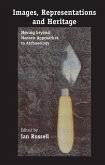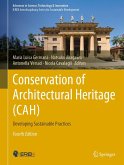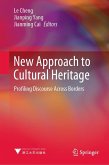There is a growing realization that human intent and activity are not easily separated from natural forces in the shaping of landscapes. The pervasive Western dichotomy of culture and nature has proved to be a poor basis for scientific research and long-term environmental management. Humans have been major factors in environmental change for thousands of years using fire, intensive hunting and a wide range of agricultural strategies to transform most ecosystems on the earth long before the Industrial Revolution. All these activites contribute to the making of cultural landscapes which incorporate elements generally classified in two groups: tangible empirical evidence of human behavior, and intangible, symbolic meanings.
This book investigates the newly emerging scope of interests and project agendas to investigate and preserve cultural landscapes. It presents the historic, archaeological, ethnographic, and environmental traditions of cultural landscape study and the attempts to reconstruct and analyze the complex processes of cultural changes through prehistoric and historic times.
The "guiding light" of the book is that the fullest understanding of a cultural landscape will materialize through interdisciplinary cooperation, which should involve an ecological approach with historical ecology as the guiding tool, applied archaeology, and environmental planning. The book addresses issues of interest to policymakers-makers and planners and those who investigate cultural landscapes.
This book investigates the newly emerging scope of interests and project agendas to investigate and preserve cultural landscapes. It presents the historic, archaeological, ethnographic, and environmental traditions of cultural landscape study and the attempts to reconstruct and analyze the complex processes of cultural changes through prehistoric and historic times.
The "guiding light" of the book is that the fullest understanding of a cultural landscape will materialize through interdisciplinary cooperation, which should involve an ecological approach with historical ecology as the guiding tool, applied archaeology, and environmental planning. The book addresses issues of interest to policymakers-makers and planners and those who investigate cultural landscapes.
Dieser Download kann aus rechtlichen Gründen nur mit Rechnungsadresse in A, B, BG, CY, CZ, D, DK, EW, E, FIN, F, GR, HR, H, IRL, I, LT, L, LR, M, NL, PL, P, R, S, SLO, SK ausgeliefert werden.









